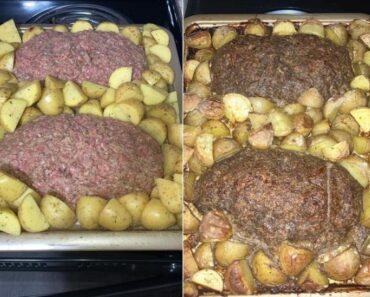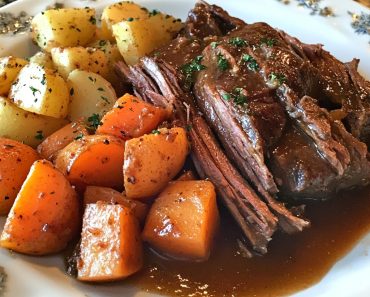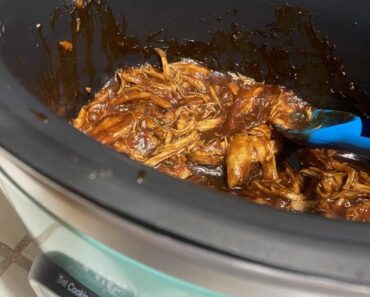
Spaghetti Aglio e Olio: A Timeless Italian Classic
There’s something deeply comforting about Spaghetti Aglio e Olio. It’s a dish that embodies simplicity, yet offers bold flavors that make every bite feel like an embrace. With just a handful of ingredients—garlic, olive oil, and red pepper flakes—this recipe creates a deeply satisfying, flavorful meal in under 20 minutes. Whether you’re cooking for one or for a family, this dish serves as a reminder that you don’t need a complicated recipe to make something truly special. Perfect for busy weeknights or an elegant dinner with friends, Spaghetti Aglio e Olio brings a sense of calm and joy to the dinner table.
Ingredients Overview
- Spaghetti (400g): The star of the dish! Traditional spaghetti works best here because its surface area allows it to soak up the garlicky olive oil perfectly.
- Garlic (6 cloves, thinly sliced): Thin slices of garlic add a robust, slightly sweet flavor to the dish. Be sure to slice it evenly to avoid burning, as burnt garlic will turn bitter.
- Extra Virgin Olive Oil (1/2 cup): Choose a high-quality extra virgin olive oil, as it will make a significant difference in the taste. It not only carries the garlic and red pepper flakes but also adds richness to the dish.
- Red Pepper Flakes (1/2 tsp, adjust to taste): A subtle kick of heat that elevates the garlic and oil. You can adjust the amount based on your spice tolerance.
- Salt (to taste): Salt is essential to bring out all the flavors of the dish. Be sure to salt your pasta water generously.
- Fresh Parsley (chopped): Adds a fresh, herbaceous finish to the dish, balancing the richness of the oil and garlic.
- Grated Parmesan (optional): While not traditionally part of this dish, a sprinkle of Parmesan adds a delightful savory note and a touch of indulgence.
Step-by-Step Cooking Instructions
1. Cook the Spaghetti
Bring a large pot of salted water to a boil. Add your spaghetti and cook until al dente, following the package instructions (usually around 8-10 minutes). Reserve 1/2 cup of the pasta water before draining the spaghetti.
Helpful Tip: Salting your pasta water is crucial! It should taste like the sea. This is the only time you’ll be able to season the pasta itself.
2. Infuse the Olive Oil
In a large skillet, heat the olive oil over medium heat. Add the thinly sliced garlic and red pepper flakes, stirring constantly for 2-3 minutes until the garlic turns golden and fragrant. Be careful not to let it burn, as burnt garlic can taste bitter.
Helpful Tip: Keep the heat at medium or slightly lower to avoid overcooking the garlic. Golden brown is your goal, not dark brown!
3. Toss the Pasta
Add the cooked spaghetti directly to the skillet with the garlic-infused oil. Toss the pasta well to ensure every strand is coated. If the pasta looks too dry, gradually add some of the reserved pasta water, about a tablespoon at a time, until you achieve the desired consistency.
Helpful Tip: The starchy pasta water helps bind the oil to the spaghetti, creating a silky sauce that clings to every noodle.
4. Season and Finish
Sprinkle the pasta with salt to taste, and toss in the chopped fresh parsley. Continue tossing for another minute to allow the flavors to meld together.
Helpful Tip: Add a little more olive oil at this stage if you like a richer, glossier finish.
5. Serve and Enjoy
Serve the spaghetti immediately, either on its own or with a sprinkle of grated Parmesan if you want to add an extra savory touch. Pair it with a simple side salad or a piece of crusty bread for a complete meal.
Storage and Reheating Tips
Storing:
Spaghetti Aglio e Olio is best enjoyed fresh, but if you have leftovers, store them in an airtight container in the refrigerator for up to 3 days.
Reheating:
To reheat, add a splash of water or olive oil to the pasta and heat it in a skillet over medium heat, tossing until warmed through. Avoid microwaving as it can dry out the pasta.
Helpful Tip: If the pasta seems a bit dry when reheating, a little reserved pasta water or fresh olive oil will bring it back to life.
20 Frequently Asked Questions (FAQs)
1. Can I use a different type of pasta?
Yes! While spaghetti is traditional, feel free to substitute with linguine, fettuccine, or even penne for a different texture.
2. Can I add vegetables to this recipe?
Absolutely! Sautéed spinach, cherry tomatoes, or even mushrooms would make great additions.
3. Is there a gluten-free option?
Yes, you can use gluten-free pasta without affecting the flavor of the dish.
4. How spicy is this dish?
The spice level is mild, but you can adjust the red pepper flakes to make it more or less spicy.
5. Can I make this vegan?
Yes, simply omit the Parmesan cheese or use a plant-based alternative.
6. What kind of olive oil should I use?
Use high-quality extra virgin olive oil for the best flavor, as it’s a key component of the dish.
7. Can I make this in advance?
It’s best served fresh, but you can make the garlic oil ahead of time and store it in the fridge for a few days.
8. What if my garlic burns?
If the garlic burns, discard it and start fresh. Burnt garlic will give the dish a bitter taste.
9. Can I add protein to this dish?
Sure! Grilled chicken, shrimp, or even crispy pancetta would complement the flavors well.
10. Do I need to use fresh parsley?
Fresh parsley adds a bright finish, but if you don’t have any on hand, you can skip it or use dried parsley sparingly.
11. Can I substitute the red pepper flakes?
You can swap them out for crushed black pepper or paprika if you prefer less heat.
12. How do I avoid oily pasta?
Make sure to toss the pasta well in the oil and add pasta water as needed to create a silky sauce rather than an oily coating.
13. Is Parmesan cheese necessary?
No, but it does add a nice umami flavor. The dish is delicious with or without it.
14. How do I prevent the pasta from sticking together?
Toss the cooked pasta with a little olive oil before adding it to the garlic oil, or simply add it immediately after draining.
15. Can I use garlic powder instead of fresh garlic?
Fresh garlic is essential for this dish’s flavor. Garlic powder won’t have the same effect.
16. How can I reduce the amount of oil?
You can reduce the olive oil to 1/4 cup if you prefer, but the richness of the dish may be compromised.
17. How long can I store leftovers?
Leftovers can be stored for up to 3 days in the refrigerator.
18. What side dishes pair well with this?
A simple side salad, roasted vegetables, or garlic bread are great pairings.
19. Can I add lemon juice for brightness?
Yes! A squeeze of fresh lemon juice can add a bright, fresh note to the dish.
20. Can I double this recipe?
Absolutely, just be sure to adjust the seasoning and oil accordingly.
20 Secrets for Achieving Culinary Perfection with Spaghetti Aglio e Olio
- Salt the pasta water generously—this seasons the pasta from the inside.
- Use fresh garlic—the star ingredient that makes or breaks the dish.
- Don’t burn the garlic—slow and steady wins the race.
- Use good-quality olive oil—this will elevate the entire dish.
- Cook the spaghetti al dente—slightly firm pasta has the best texture.
- Add red pepper flakes to taste—adjust according to your spice tolerance.
- Reserve pasta water—it helps create a silky, cohesive sauce.
- Toss the pasta in the oil immediately—this ensures the pasta soaks up all the flavors.
- Add Parmesan for extra umami—a little goes a long way.
- Chop the parsley just before serving—to keep its flavor fresh and vibrant.
- Use a large skillet—this helps evenly coat the pasta in the garlic oil.
- Don’t overcrowd the pan—allow the garlic to cook evenly without burning.
- Try adding lemon zest—it brightens up the flavor profile.
- Add a pinch of sugar—to balance the garlic’s sharpness.
- Use high-quality pasta—better pasta equals a better dish.
- Try infusing the oil with rosemary—for a subtle herbaceous note.
- Mix olive oil with butter—for a richer, more decadent sauce.
- Garnish with fresh basil—for a sweeter, aromatic finish.
- Top with crispy breadcrumbs—for added crunch and texture.
- Serve immediately—Spaghetti Aglio e Olio is best enjoyed fresh




















